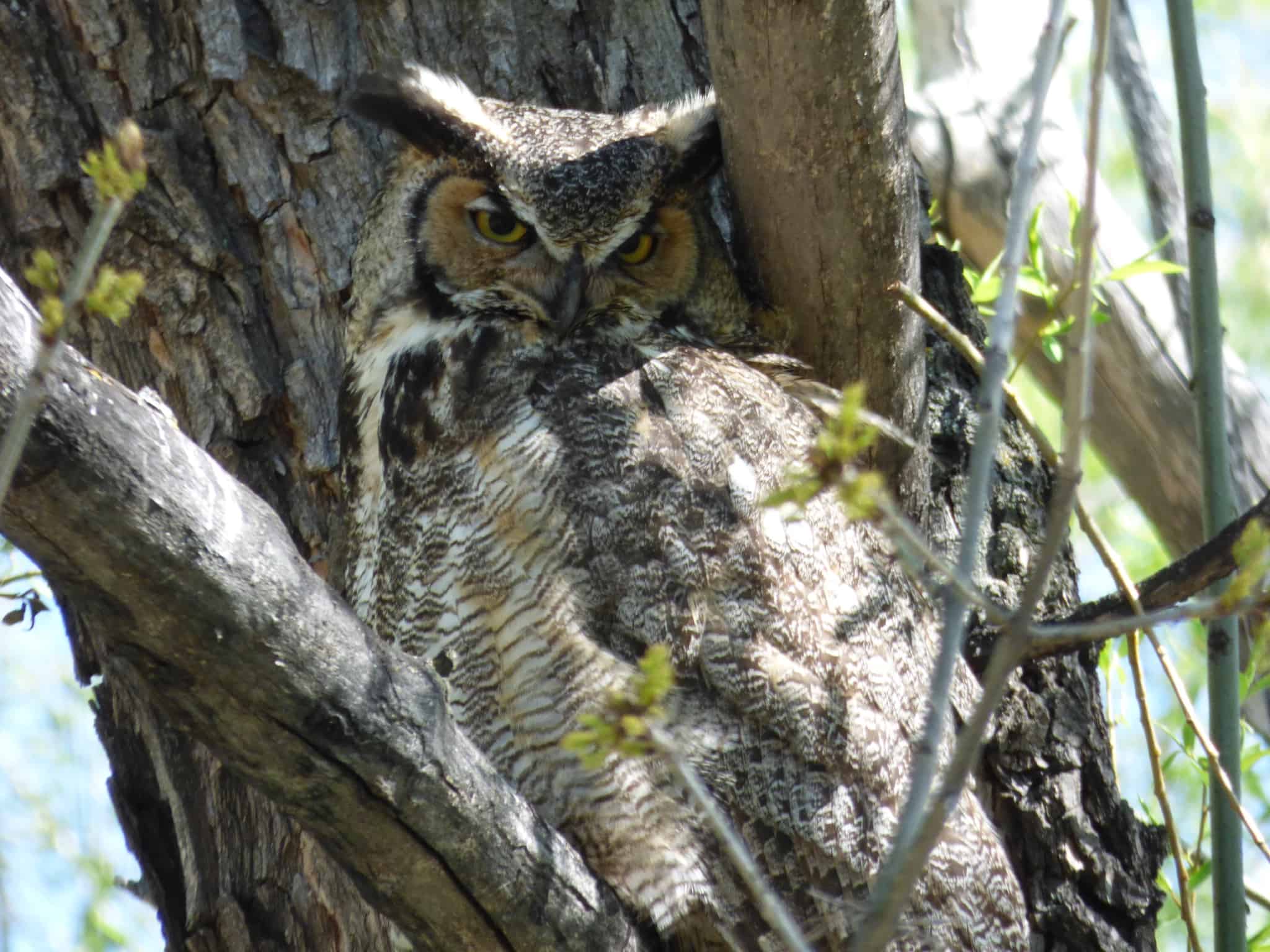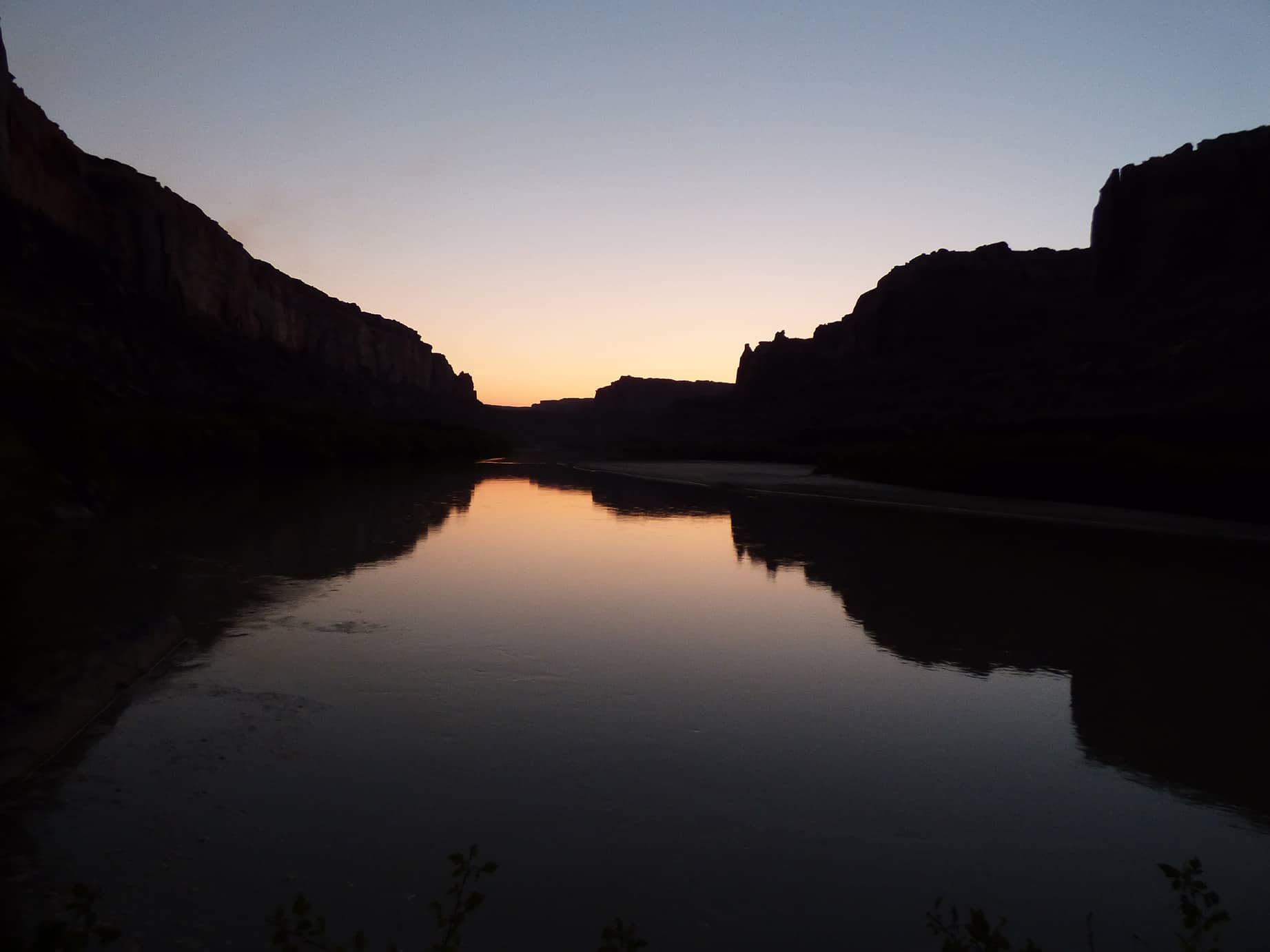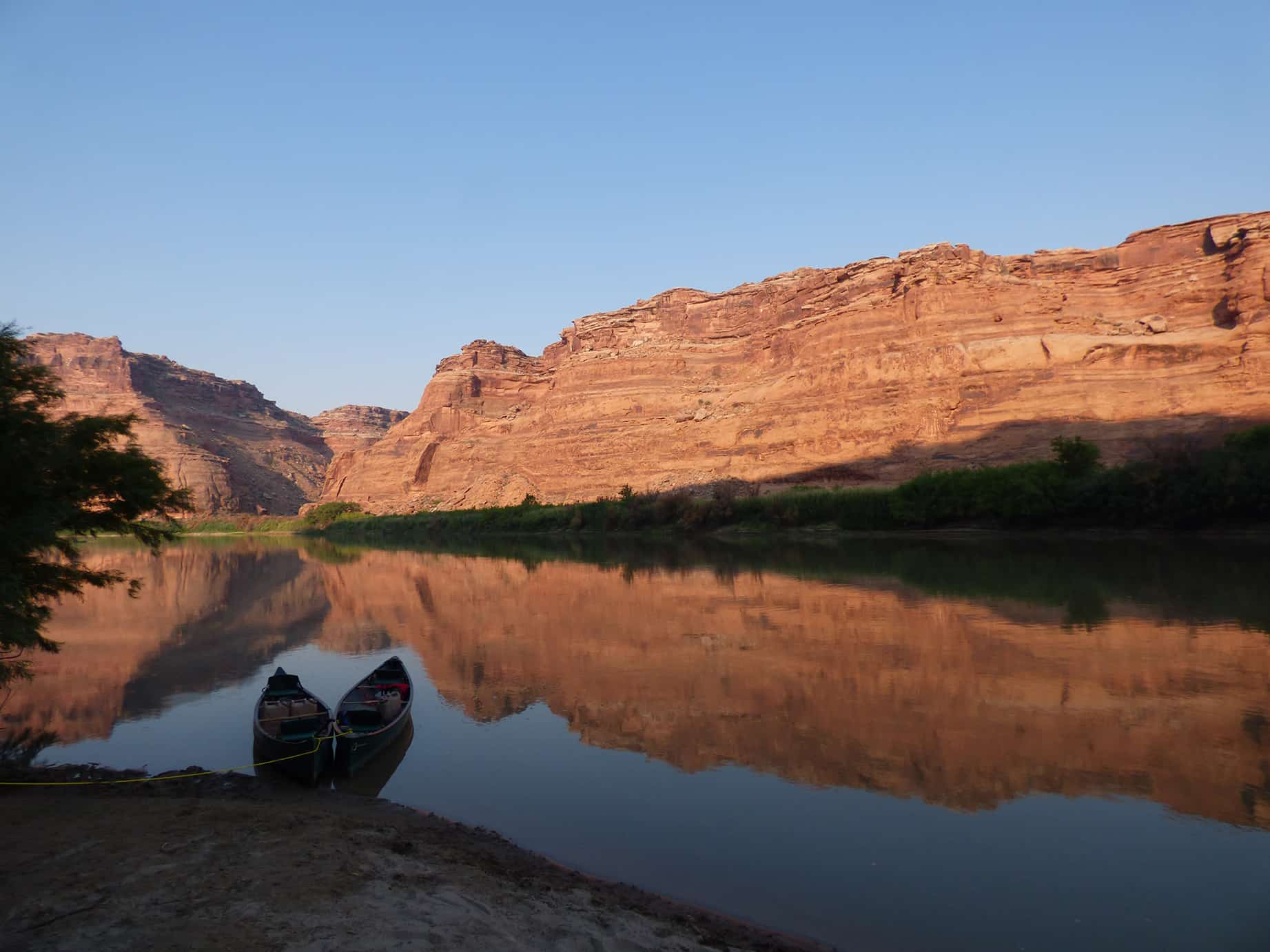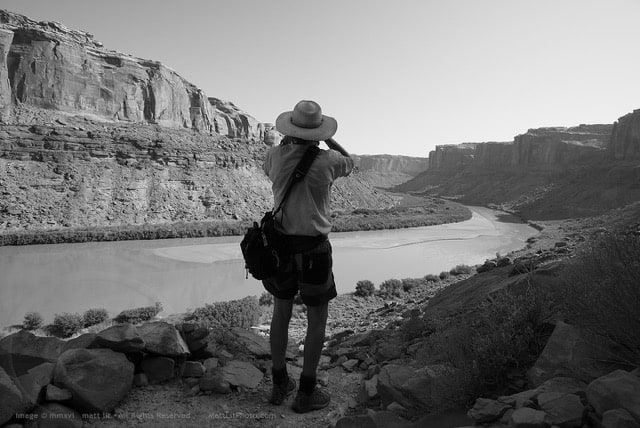As I paddled down the Green River for the first time last summer, I vividly remember my wide eyes scanning the landscape for trees. Armed with only a hammock to sleep in, I wondered to myself, how am I going to sleep tonight if my sleep depends on me finding a tree to hang from? Amidst the beauty of the desert and the calm of the river, a big red “SURVIVAL MODE” sign clicked on in my brain, and true to my nature, I began to worry. From my canoe on the river, all I could see was leafy tamarisk bushes on the shore and red sandstone cliffs in the distance.
Beyond the tamarisk and between the cliffs, trees and shade seemed few and far between. But as soon as we brought our canoes onto shore and began to look around, I began to see so much more than just sand, rocks, and river. The desert has a way of taking a person into its hands and opening their eyes while doing so.
A hike further into the canyon revealed a tree that defies the harsh climate and finds its home in the rock. The Utah juniper decorated the canyon before me, and—along with the pinyon pine and Fremont cottonwood—became my hammock’s saving grace come nightfall.
The juniper became symbolic to me as the only tree that could cradle my hammock at most campsites, and also as a tree that thrives in permanent survival mode. In a desert that receives about 7-9 inches of rainfall every year, the Utah juniper (juniperous osteosperma) has adapted to create life from conditions which we would consider bleak. The juniper’s massive underground root system can account for up to ⅔ of the tree’s total mass, and its tap root sometimes grows 25 feet straight down while its lateral roots can grow 100 feet out in order to find water.
If trees could talk, a juniper would have a lot to tell us. The juniper typically lives 350-700 years, and some even live to see 1000 years. Over its life, the Utah juniper will not exceed 30 feet in height or 3 feet in trunk diameter. Designed for survival, the juniper’s twisted and gnarled branches allow it to withstand the harsh winds, winter cold, and summer heat.

Juniper scattered throughout the canyons are great for hammock-hanging in a largely treeless landscape.
The juniper plays an important part in its ecosystem for this reason, providing shade and shelter where few other trees grow. Its fruit, which appear to be berries but are actually tiny pinecones covered in a drought-resistant waxy coating, provide nourishment for coyotes, jackrabbits, and birds, all of which help the juniper distribute its seeds throughout the area.
Because the Utah juniper has made its home across a large portion of the American southwest, different Native American tribes have discovered its various uses. The Ancestral Puebloans & Fremont peoples, and later the Utes, Navajos and Paiutes made their home in the Canyonlands area and the surrounding region. Although the histories, cultures, and lifestyles of these southwest Native American groups are quite diverse and varied, they do share a landscape rich with gifts, including the Utah juniper.
Among many of these tribes, the juniper was used medicinally to aid in kidney trouble, heart trouble, hemorrhages, stomachaches, headaches, menstrual cramps, colds, fevers, smallpox, flu, pneumonia, venereal disease, diabetes, cholera, tuberculosis, chickenpox, worms, swellings, rheumatism, burns, sore throats, hives or sores, and boils or slivers. After crushing and boiling the berries (cones), juniper could be made into a strong tea to treat these conditions.
When dried, the berries made excellent decorative beads as well as the rattling piece inside a rattle. Because juniper’s bark hangs off of the tree in strips, it made excellent roof thatching material, as well as floor covering, diaper padding, and torch material.
Although the desert is known for its harsh climate and bleak conditions, the juniper tree is just one example of the rich gifts that the desert has to offer if we just look a little harder, and trust that nature will hold our hammock in her branches.
The Utah juniper is just one of many amazing species you will find on your trip with The River’s Path. April 1st is the earlybird pricing deadline for our Spring Women’s Vision Quest! Hurry — spots are filling up quickly. Reserve your spot today!
Sources: Utah State University Cooperative Extension, MojaveDesert.net








